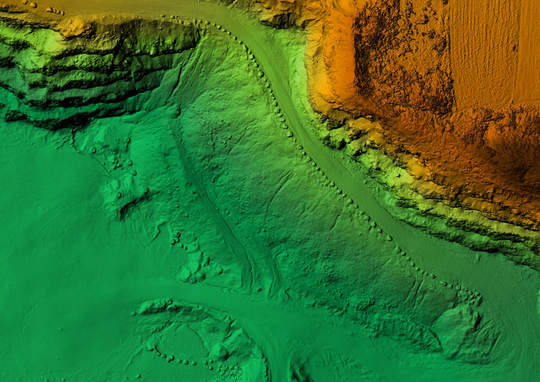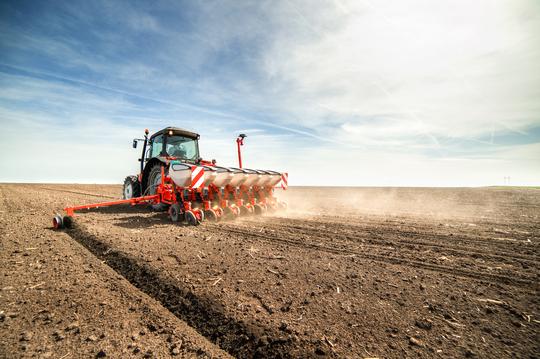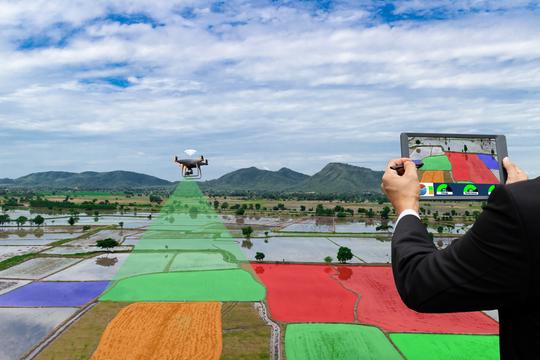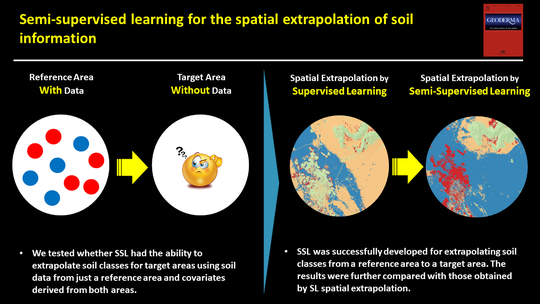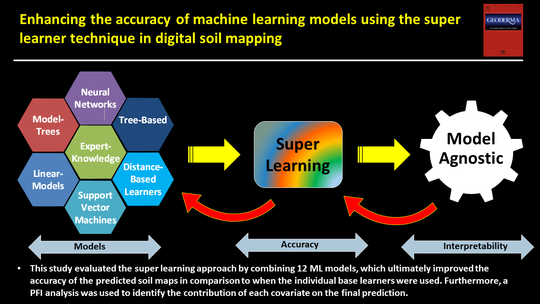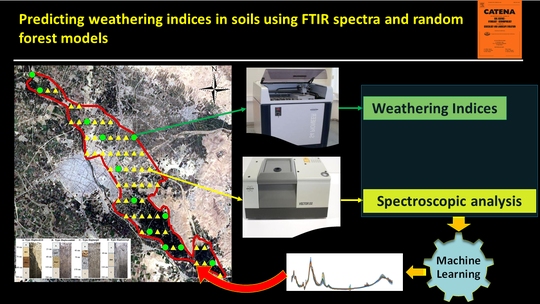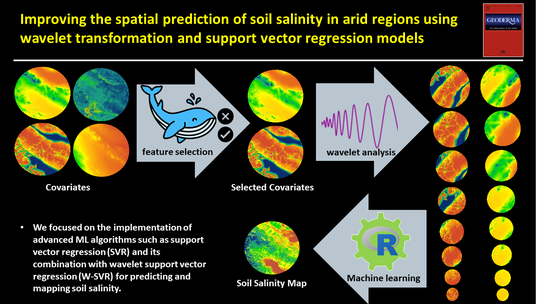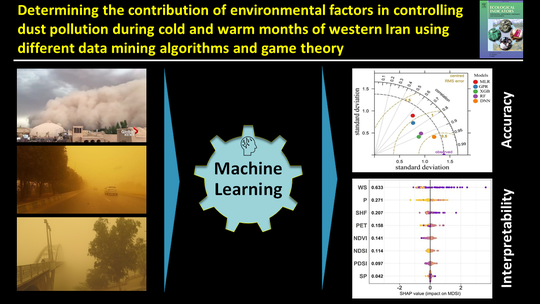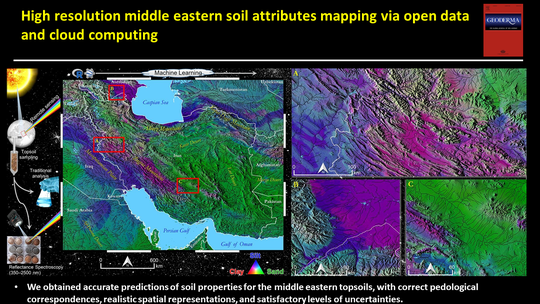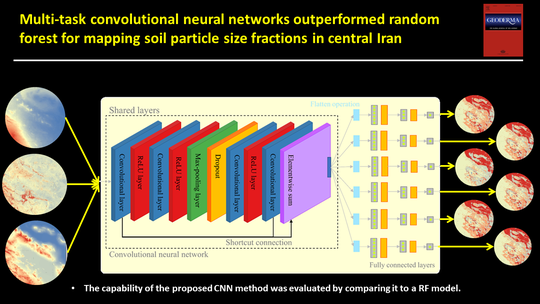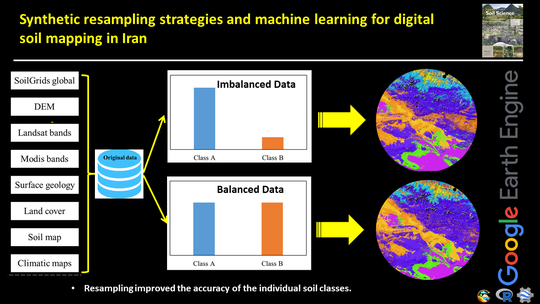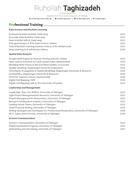About me
My primary research interest is in Pedometrics with a particular focus on remote/proximal soil sensing and Digital Soil Mapping. The core of the pedometric approach integrates soil system knowledge with applied statistics, Machine Learning, geoinformatics, and Remote Sensing. I apply the most recent technology in spatial data analysis to model and predict various environmental metrics such as soils, water, vegetation, and climate.
I’m interested in:
- Pedology and Digital Soil Mapping
- GIS, Remote and Proximal Sensing
- Spatial Data Analysis and Machine Learning
- Soil Health, Climate Change and Precision Agriculture
Skills
Agriculture
Machine Learning
Programming
Statistics
Remote Sensing
GIS
Experience
Postdoc in Pedometrics
Postdoc in Pedometrics
Assistant Professor in Soil Science
Postgraduate Visiting Scholar
PhD Student in Soil Science
Projects
Spatial information about the soil is needed increasingly for making informed management decisions about the environment, particularly with regard to developing different types of agriculture. In this project, machine learning models are used to quantify the spatial distribution of soils on local, regional, and national scales based on the relationships between environmental data and soil properties/classes. article1,article2,article3.
Soil degradations are predominant environmental problem world-wide their accurate assessment is essential for determining appropriate ways to deal with land degradation, for better soil and crop management. In this project, the applicability of machine learning models and remote sensing is evaluated to monitor and assess land degradations such as soil salinity, soil erosion, and air/water/soil pollution. article1,article2,article3.
Soil organic carbon storage is a key function of soils, influencing soil physicochemical properties. As the world’s soils contain more organic carbon than the atmosphere and the biosphere together, soils are considered to be a crucial pool in the global carbon cycle. Thus, accurate spatial information of SOC is vital to estimate and predict greenhouse gas emissions and physicochemical functions of soils. article1,article2,article3.
An increasing amount of sophisticated data, from remote sensing and especially from proximal sensing, make it possible to bridge the gap between data and decisions within agricultural planning. On-demand representative sampling and modeling of useful soil information leads to an improvement in the decision-making processes of fertilization, higher productivity, and biofuel production. article1,article2,article3.
Featured Papers
A new approach for extrapolating soil information from reference (an area with soil data) to target (an area without soil data) areas was proposed in my research. I evaluated the ability of a semi-supervised learning approach compared to a supervised learning approach for extrapolating soil classes in two areas. The findings indicated the effectiveness of semi-supervised learning approach for spatial extrapolation.
This study examined the capability of ML models in estimating soil texture fractions using different combinations of remotely sensed data from Sentinel-1, Sentinel-2, and terrain-derived covariates across two regions in Germany. We tested the predictive power of three different ML models: the random forest, the support vector machine, and extreme gradient boosting coupled with the remote sensing data covariates.
This study evaluated the super learning approach by combining 12 ML models, which ultimately improved the accuracy of the predicted soil maps in comparison to when the individual base learners were used. Furthermore, a model agnostic method was used to identify the individual covariates within the overall predictive model. Overall, the proposed approach may be used for improving accuracy of ML models in digital soil mapping.
Land suitability assessment is essential for increasing production and planning a sustainable agricultural system, but such information is commonly scarce in the semi-arid regions of Iran. Therefore, our aim is to assess land suitability for two main crops (i.e., rain-fed wheat and barley) based on the Food and Agriculture Organization (FAO) “land suitability assessment framework” for agricultural land in Kurdistan province, Iran.
The main goals of this work were to assess the suitability of different indices to determine soil weathering, and to predict weathering indices using Fourier Transform Mid-infrared (FTIR) spectroscopy and Random Forest models. The important spectral bands for prediction were those related to the presence of smectitic clays, which indicates that weathering is related to the alteration of primary minerals and the neoformation of smectites.
In this study, soil salinity was predicted and mapped using machine learning and digital soil mapping approaches. Specifically, support vector regression (SVR) was combined with wavelet transformation (W-SVR) of a wide range of environmental covariates derived from a digital elevation model, remote sensing, and climatic data. The results indicated that W-SVR performed better in predicting soil salinity.
The specific objectives of this study were (1) to assess the usefulness of the DNN for predicting dust events in comparison to MLR, GP, XGB, and RF; (2) to examine the interpretability of DNN models using Shapley values; and (3) to determine the contribution of environmental factors in controlling dust events during the cold and warm months of western Iran. We observed that the DNN model was most effective in predicting DSI.
There are no detailed soil maps covering a large extension of the Middle East region, especially for calcium carbonate content. Thus, we used topsoil data for mapping near 3,338,000 square km of the Middle East. We used covariates obtained from RS data and random forest algorithm. After training RF we used the optimal ones for making spatial predictions of topsoil attributes and associated uncertainties at 30 m resolution.
Although conventional machine learning algorithms, such as random forest, have been extensively used in digital soil mapping to predict the PSF, less research examined the potential of state-of-the-art deep learning approaches for such processing. Convolutional neural networks are able to incorporate contextual information about the landscape, which is of great use for digital soil mapping analysis.
Most common machine learning algorithms usually work well on balanced training sets, that is, datasets in which all classes are approximately represented equally. Otherwise, the accuracy estimates may be unreliable and classes with only a few values are often misclassified or neglected. This is known as a class imbalance problem in machine learning and datasets that do not meet this criterion are referred to as imbalanced data.
The main purpose of this study, is to evaluate an advanced feature selection technique, artificial bee colony algorithm, to reduce the number of auxiliary variables derived from a digital elevation model and remotely sensed data. A combination of depth functions and data miner methods were applied for three-dimensional mapping of soil organic matter in Big Sioux River watershed, South Dakota, USA.
